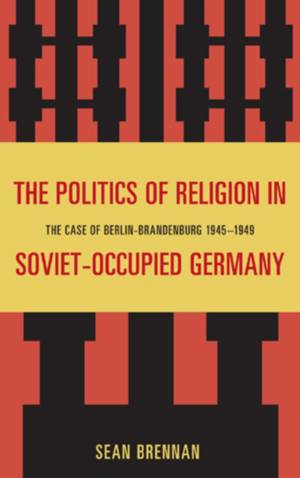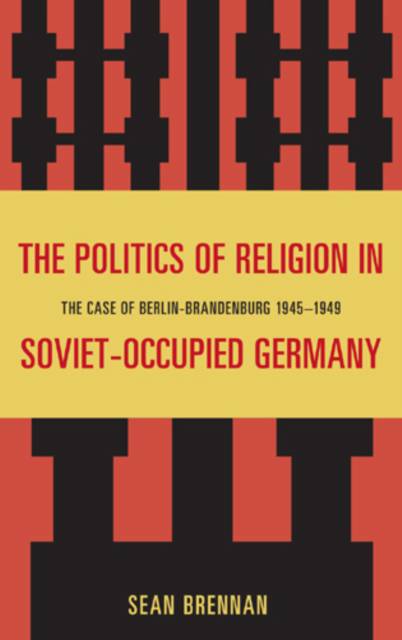
- Afhalen na 1 uur in een winkel met voorraad
- Gratis thuislevering in België vanaf € 30
- Ruim aanbod met 7 miljoen producten
- Afhalen na 1 uur in een winkel met voorraad
- Gratis thuislevering in België vanaf € 30
- Ruim aanbod met 7 miljoen producten
Zoeken
Politics of Religion in Soviet-Occupied Germany
The Case of Berlin-Brandenburg 1945-1949
Sean Brennan
Hardcover | Engels
€ 203,45
+ 406 punten
Omschrijving
This book analyzes the relationship between Soviet military authorities, the East German Communists, and the leadership of the Protestant and Catholic Churches in the Soviet zone of Germany, especially its central province of Berlin-Brandenburg. It discusses how relations worsened between communist and church authorities as the Soviet zone was rebuilt as a German state on the Stalinist model from 1945 to 1949.
Specificaties
Betrokkenen
- Auteur(s):
- Uitgeverij:
Inhoud
- Aantal bladzijden:
- 256
- Taal:
- Engels
Eigenschappen
- Productcode (EAN):
- 9780739151259
- Verschijningsdatum:
- 25/11/2011
- Uitvoering:
- Hardcover
- Formaat:
- Ongenaaid / garenloos gebonden
- Afmetingen:
- 155 mm x 231 mm
- Gewicht:
- 544 g

Alleen bij Standaard Boekhandel
+ 406 punten op je klantenkaart van Standaard Boekhandel
Beoordelingen
We publiceren alleen reviews die voldoen aan de voorwaarden voor reviews. Bekijk onze voorwaarden voor reviews.








